DP-900: Microsoft Azure Data Fundamentals
Introduction
Course Introduction
Welcome to the Azure Data Fundamentals course. In this lesson, we’ll explore how to store and manage data in Azure. This content aligns with the DP-900 certification exam objectives. I’m Peter Vogel, and I’ll guide you through:
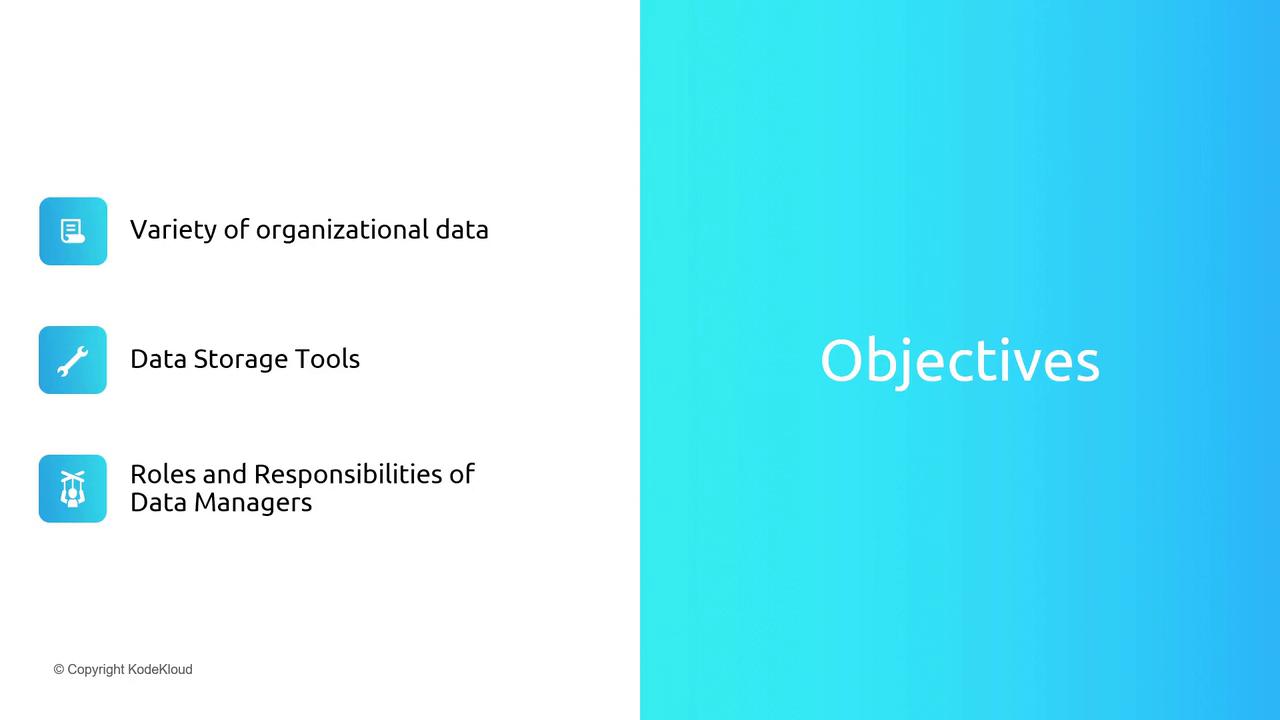
- The diversity of organizational data
- Azure’s data storage tools
- Key roles and responsibilities in data management
Organizations handle everything from images and documents to structured records and semi-structured logs. Choosing the right Azure storage solution is critical for performance, scalability, and global access. We’ll also cover the primary roles responsible for securing and analyzing that data.
Data Types and Storage Needs
Data formats and usage patterns drive storage requirements:
| Data Type | Characteristics | Example |
|---|---|---|
| File-based | Whole-file retrieval | Images, documents |
| Structured | Fixed schema, relational | SQL databases |
| Semi-structured | Flexible schema, JSON/XML, key–value | NoSQL stores like Azure Cosmos DB |
When storing files—such as pictures or PDFs—you must download each file in its entirety; partial downloads are not practical. Databases, by contrast, read and update only the necessary portions of a record.
Use cases vary:
- Analyze historical data for trends and forecasting.
- Process hundreds of thousands of transactions per second with low latency.
- Share updates globally so Berlin’s changes appear instantly in Singapore.
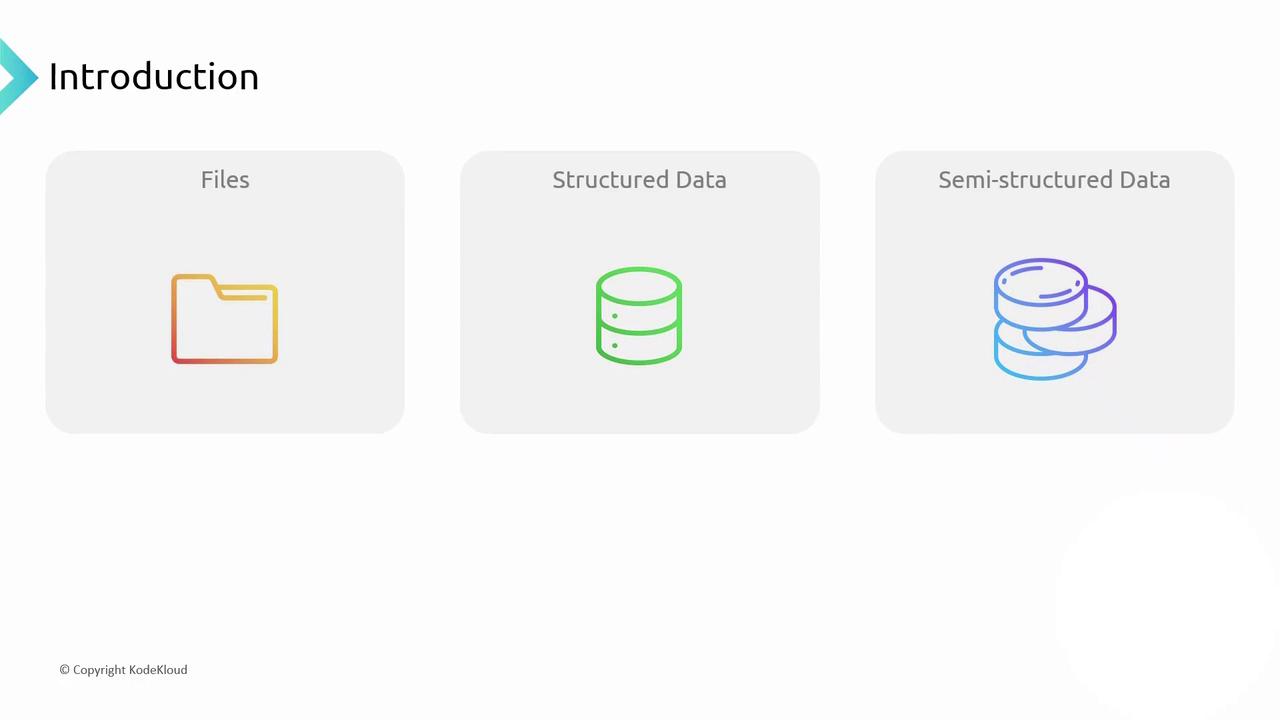
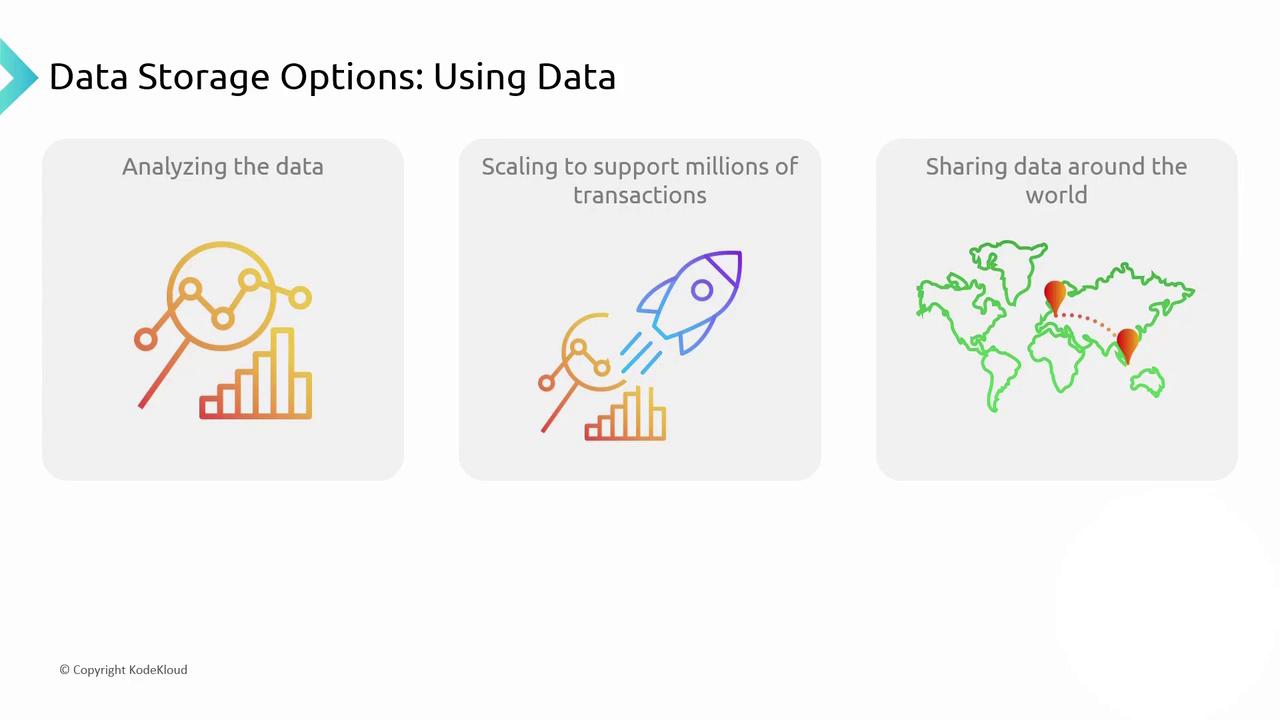
Azure Data Storage Solutions
Azure provides a range of storage services for different data scenarios:
| Service | Use Case | Example |
|---|---|---|
| Azure Files | Fully managed SMB/NFS file shares | Mount shares on Windows or Linux VMs |
| Azure Blobs | Object storage for unstructured data | Store images, logs, backups |
| Azure SQL DB | Managed relational database service | Customer records, financial transactions |
| Azure Cosmos DB | Globally distributed NoSQL database | Catalogs, IoT telemetry, real-time apps |
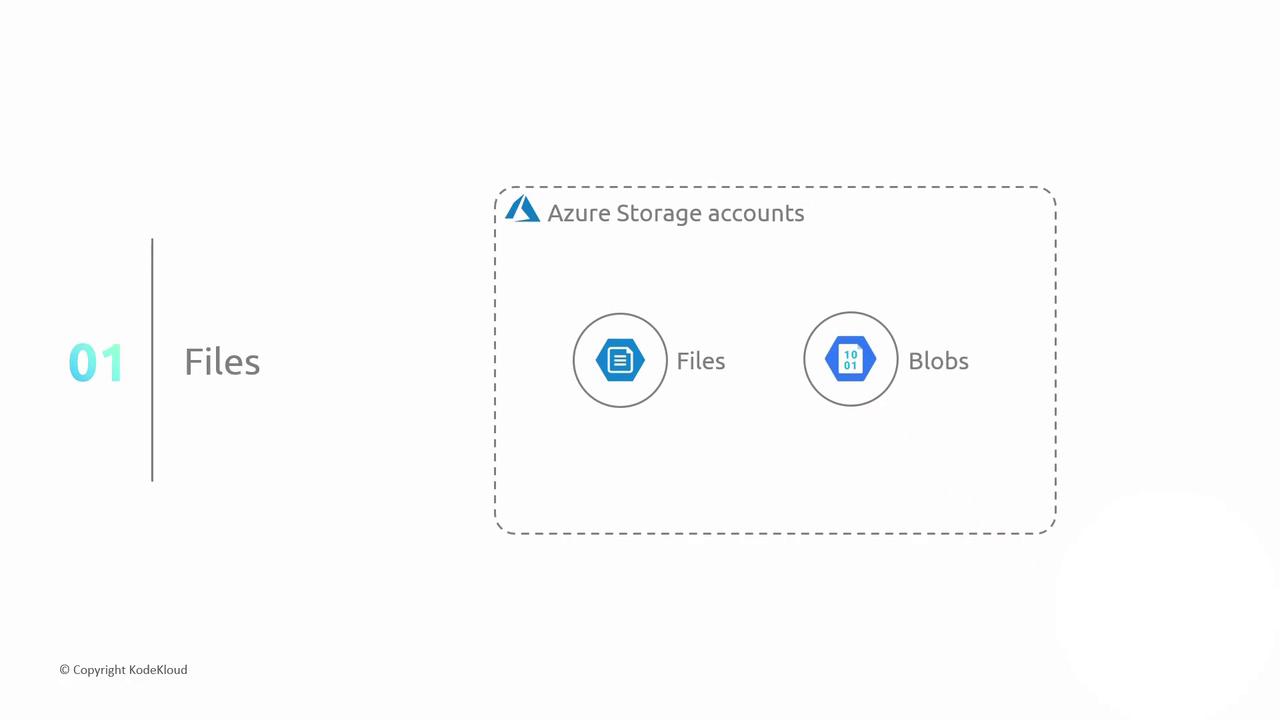
Choosing Between Azure Files and Azure Blobs
- Azure Files: Best for lift-and-shift applications using SMB or NFS protocols.
- Azure Blobs: Optimized for large-scale object storage with REST APIs and tiered access.
Note
Consider lifecycle management policies to move blobs between hot, cool, and archive tiers to optimize cost.
Analytics Workflow
For analytics scenarios, Azure follows an Extract–Transform–Load (ETL) pattern:
- Extract data from files, databases, and NoSQL stores
- Transform into a common schema
- Load into a data warehouse for high-performance querying
Visualization and BI tools then convert raw data into actionable insights.
Note
Azure Synapse Analytics integrates data warehousing, big data, and data integration in a single service—ideal for end-to-end analytics.
Roles and Responsibilities
Data security, privacy, and expertise drive role assignments:
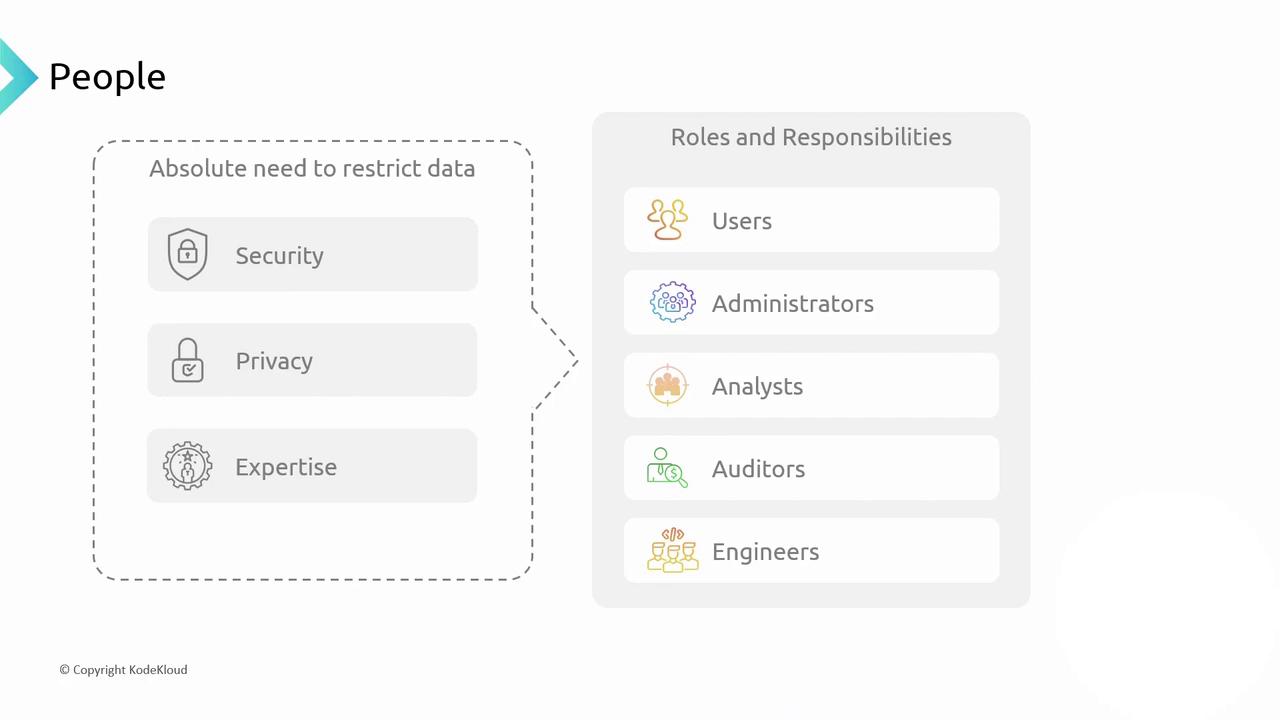
| Role | Responsibilities |
|---|---|
| Users | Create, read, and manipulate data for business tasks |
| Administrators | Define access policies and manage data collection |
| Data Analysts | Explore and model historical data for insights and predictions |
| Auditors | Verify compliance with security, privacy, and regulatory standards |
| Engineers | Architect and implement Azure data storage and processing solutions |
Warning
Grant the principle of least privilege. Always assign minimal permissions required for each role to reduce security risks.
In the next sections, we’ll dive deeper into file-based storage with Azure Files and Blob Storage. Stay tuned!
Links and References
- Azure Storage documentation
- Azure Cosmos DB documentation
- Azure Synapse Analytics documentation
- DP-900: Microsoft Azure Data Fundamentals
Watch Video
Watch video content